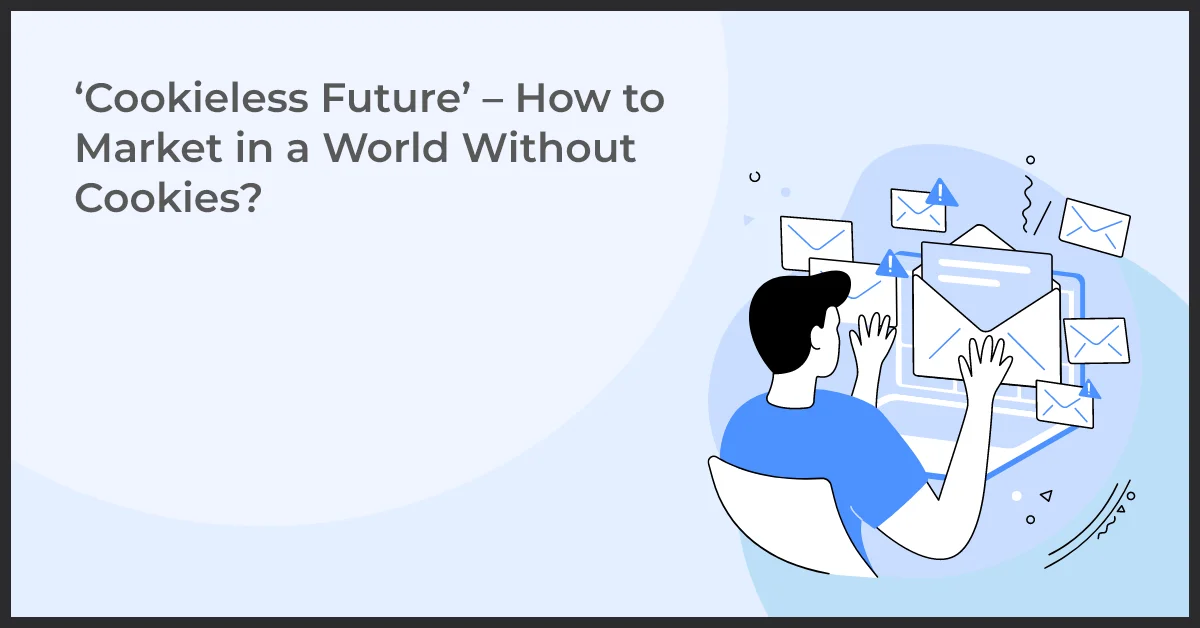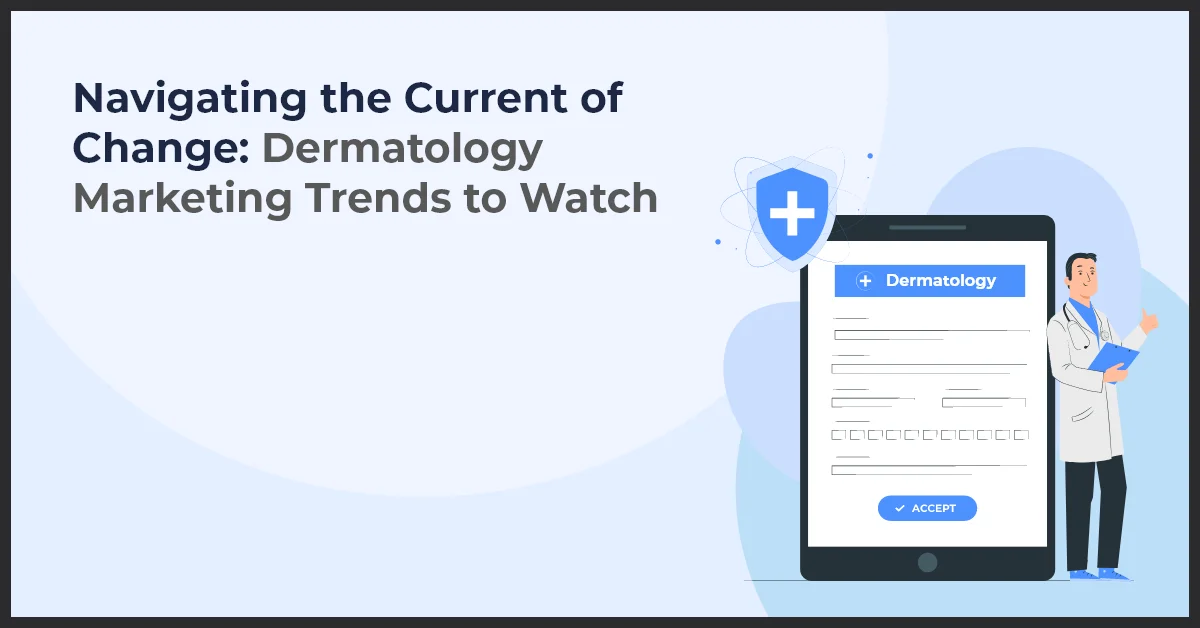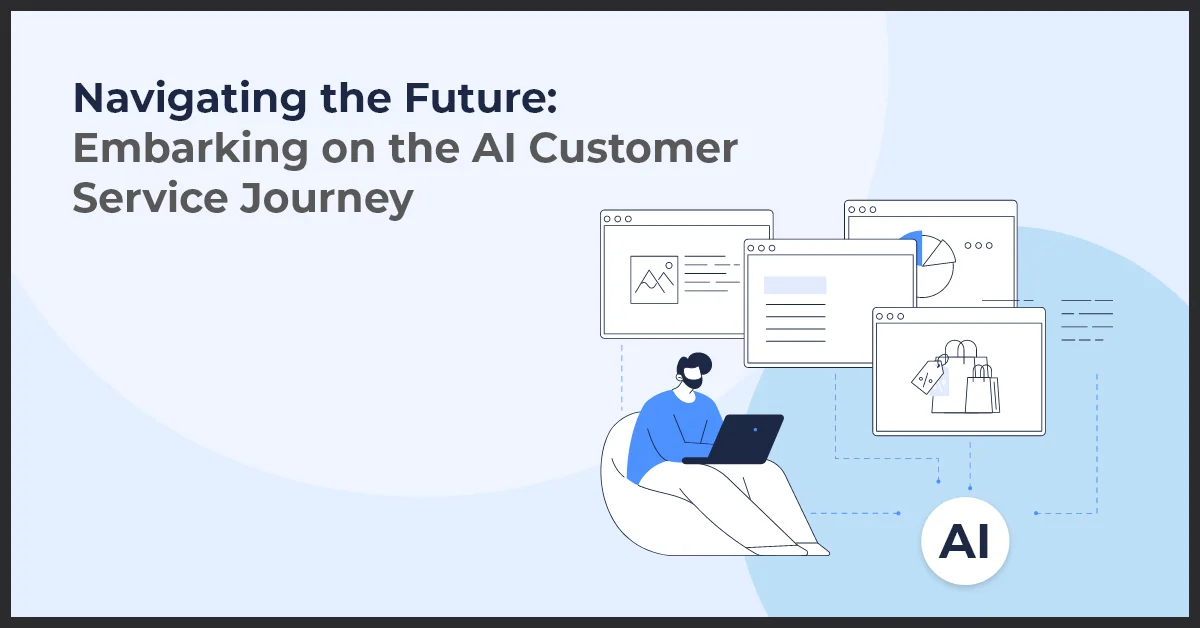‘Cookieless Future’ – How to Market in a World Without Cookies?

Published on: June 29, 2022
Updated on: June 26, 2024
1353 Views
- Digital Marketing
14 min read
While pop culture would have you believe that the cookie monster is a blue, fuzzy, lovable, cookie-devouring, googly-eyed creature on Sesame Street, it is far from the truth. The real cookie monster has been your privacy-threatening, auto-filling, preference-saving, data-memorizing internet browser setting all along—lovable only to digital marketers, who need those cookies to know their customers better.
But this relationship between digital marketing and cookies is soon to end with Google’s move to block third party cookies. This is going to open marketers to a ‘Cookieless Future’ making it difficult to deliver personalized customer experiences. Here’s what we think about the cookieless future and how it will change the marketing landscape.
‘Cookieless Future’ - What It Means
Cookieless future is the shift in the digital landscape which will be followed by Google’s decision of phasing out third-party cookies. Cookieless refers to websites that save your data using identifiers other than cookies, such as IP addresses or device IDs. In a cookieless world, you will be tracked online by these substitute techniques.
Google announced in January 2020 that it would no longer gather personally identifiable information (PII) graphs from different identifiers, such as users' email addresses. Further, Google’s extension of phasing out third-party cookies by 2023 rather than 2022 brought a sense of relief. The decision bought advertisers some time to scramble out the best plan and initiatives toward this cookieless future.
As a large number of advertising activities depend on the information collected by third-party cookies, Google and several other advertising industries are developing new alternatives to ensure data privacy to users.
Marketers are depending much on third-party cookies and are significantly overlooking other strategies. Moreover, alternatives to cookies already exist and their pervasiveness significantly upsurge as new privacy regulations approach.
Before we dig deep into ‘the Cookieless Future’, let us first shed some light on what cookies are and how they impact marketers’ efforts.
Cookies and Their Impact on Marketers
Businesses today are promising to deliver satisfactory experiences to customers based on their constantly evolving needs. Around 80% of marketers rely on third-party cookies to know their customers better.
But without cookies, delivering personalized experiences can be a bit challenging. Cookies help marketers and advertisers track visitors. Third-party cookies help track website visitors by adding scripts or tags.
Third-party cookies also benefit marketers as they can collect information such as device type, data, location, which helps them track user behavior and use it for more refined marketing tactics.
From user behavior to demographics, cookies are the pillars of analytics and are certainly one among the essential components required for converting ads into sales.
Advertisers use third-party cookies to profile their audiences and establish targeting, as well as improve campaign performance, analyze ROI, and create attribution models. As tracking cookies presently enables cross-site tuning, optimization, and data tracking; campaign planning and targeted advertising will no longer be the same once browsers block it.
Marketers and advertisers will now need to modify their business models and adopt new technology solutions that will enable them to operate with first-party cookies and reach their customers in an effective way. Hopefully, this technological shift will bring new methods, though it will be challenging at first.
What Will the Absence of Cookies Mean?
Absence of third-party cookies will have a heavy impact on campaign reach and targeting,specifically when it comes to tracking audience behavior when they leave your website. It will be challenging to implement and track marketing strategies like retargeting and audience extension.
Marketers will be unable to link their campaigns to conversion events such as demo, registrations, purchases, or sales once the cookies are removed. As a result, real-time user-level data will be insufficient. Thus, businesses need to evaluate their reliance on third-party cookies to understand how much this update will impact their data or business.
Marketers should also use this knowledge to start developing a road map and action plan to manage data deprecation by using new ways to identify and engage consumers, as well as a future-proofed measurement framework.
The present marketing ecosystems and measurement techniques are nearly and exclusively based on third-party cookies. Customers have become savvier regarding data privacy, which makes them more concerned about their security.
So, companies must seek new ways to display advertisements that are still customized and accurate for current and prospective customers. Smart marketers will now have to use several layers of data to create a future-proof measuring approach that is also privacy-friendly.
How Can Marketers Prepare for a Cookieless Future?
A report from ToolBox states, only 8% of marketers are prepared for the cookieless future. Businesses should not rely on just one option, but rather on a combination of options tailored to their specific needs. We anticipate it will be built on a mix of first-party data relationships, non-audience-based targeting solutions like contextual targeting, and hybrid measurement models in many cases.
- Gathering First-Party Data
In about six months, third-party cookies will completely vanish from Chrome, which puts maximum marketers on a pedestal of what to do next. With several technical solutions available, marketers have nothing to worry about.
First-party data is one tactic that advertisers and marketers can leverage. They can still utilize foot traffic, CRM tools, and in-app data to build targeted marketing campaigns. With first-party data, the users who have shown interest in the product or service will help you to gather more relevant information, so the conversion rate after first-party data will be higher as compared to third party data.
- Contextual Advertising
Sometimes old-school techniques never fail to amaze people. Contextual advertising is like targeted advertising that appears on a website or other platforms.
Thus, by using relevant keywords, informative website content to advertise your product or service, and create contextual ads, marketers can find the right users at the right time.
When the users click on the content or the ads, marketers will have a higher conversion rate and click-through rate.
- Data Consolidation
When your data sources are diverse and distinct, it might be tough to make sense of what you have. Consolidation is required in order to obtain current, accurate, and full data. Customer Data Platforms (CDPs) excel at this role, allowing users to centralize and integrate data from a variety of sources.
- User-Based Targeting
User-based advertising depends on a unique identification tied to the user rather than the device. This technique does not rely on third-party cookies to monitor users or collect data, and it allows businesses to meet consumers where and when they want to interact with them.
Customers' data, which can range from purchase information to email interaction to device information, can be used by the business to successfully target the audience.
Google’s Move Toward a Cookieless Future
Google’s plan is to shift toward the Privacy Sandbox. The goal is to pursue an industrywide and open-source initiative, describing it as a safe environment used for customization that aims to protect users' privacy. The reasons catered towards this move are:
- Eradicate the possible risk of surveillance or tracking of user data, like fingerprints.
- Most people block cookies, which can cost advertisers their funding, to prevent them from losing money when no data is retrieved.
- Improve transparency, privacy, safety and control for web users.
The Role of CRM Onboarding in a Cookieless World
As the digital marketing landscape pivots away from reliance on third-party cookies, businesses are seeking new ways to understand and engage with their customers. Here is where CRM onboarding places itself as an essential part of a cookieless marketing strategy. In simple terms, CRM onboarding is the process of integrating offline customer data with online systems to enable holistic and personalized marketing efforts.
Understanding CRM Onboarding and Its Importance
CRM onboarding allows businesses to match their rich offline data (like purchase history and customer service interactions) with their online activities. This process gives companies a more comprehensive view of customer behaviors and preferences without invading privacy. In a world without cookies, CRM onboarding is increasingly critical for maintaining accurate and actionable customer profiles.
Strategies for Unifying Offline and Online Customer Data
Integrating the two data ecosystems—online and offline—can seem daunting. However, by using unique identifiers like email addresses or phone numbers, businesses can create links between these disjointed data sets. With strong data management strategies, it's possible to construct a unified view of each customer that informs marketing decisions and, ultimately, transforms customer experience.
- Implement consistent data collection standards across channels.
- Invest in technologies that can securely match offline data with online identifiers.
- Develop a seamless flow of data to keep both online and offline databases updated.
Enhancing Customer Relationships Through Better Data Management
With a robust CRM onboarding strategy, marketers can foster deeper customer relationships. Through the rich insights gained from a unified data approach, companies can deliver personalized experiences, tailored content, and targeted promotions that resonate with their audience. In the end, it's all about leveraging the data you have to create meaningful interactions, ensuring customers feel valued and understood—sans cookies.
The world of marketing is evolving, and CRM onboarding is set to play a pivotal role in navigating these changes. By embracing these strategies, businesses can prepare to thrive in a cookieless future, laying the foundation for lasting customer relationships built on trust and relevance.
Discover How AI and Machine Learning Revolutionize Cookie-Free Marketing
As we venture into a new era of digital marketing without the reliance on cookies, Artificial Intelligence (AI) and Machine Learning (ML) have become the torchbearers for change. These cutting-edge technologies are key to interpreting vast amounts of data and enabling marketers to maintain relevance and personalization in their campaigns. Let's dive into how these intelligent systems are shaping a cookie-free future.
The Role of AI and Machine Learning Algorithms in Interpreting Data Without Cookies
Without the crutch of cookies to track user behavior, AI and ML algorithms step in to analyze first-party and zero-party data, extracting meaningful insights. By recognizing patterns in user interactions, AI-powered platforms can predict preferences and future behaviors, ensuring that marketing efforts hit the mark, even without the detailed tracking of old.
Personalization and Targeting in the Absence of Third-Party Data
The absence of third-party data would have once spelled disaster for targeted marketing efforts. Today, AI and ML fill that void, empowering brands to create hyper-personalized experiences by leveraging their existing data. AI's advanced predictive capabilities allow for the anticipation of consumer needs, ensuring that each customer feels that the marketing message speaks directly to them.
Ethical Considerations and Consumer Trust in AI-Driven Marketing
As we rely more on AI for marketing, ethical considerations come to the forefront. It's essential for companies to use AI responsibly, being transparent about data use and protecting consumer privacy. Building consumer trust is paramount, as trust is the ultimate currency in a landscape devoid of cookies. We must ensure that AI-driven marketing not only respects privacy but also enhances the consumer experience in a meaningful and ethical way.
- Transparency: Brands should always disclose the use of AI in their marketing efforts and the type of data being utilized.
- Control: Consumers should have control over their data and the choice to opt-in or opt-out from AI-driven personalization.
- Security: It's the brand's responsibility to implement robust data security measures to protect consumer information.
Adapting to AdTech Innovations in a Cookieless World
Hey there, marketers! Now that cookies are crumbling, it’s essential to stay ahead in the game by embracing the latest AdTech innovations. In a world where user privacy reigns supreme, we need to ensure our advertising strategies adapt and evolve.
Overview of the Latest AdTech Advancements for Cookieless Marketing
Let's dive into the world of AdTech without the cookie crutch. Innovations are constantly shaping the way we collect data, analyze consumer behavior, and target our ads. From AI-driven insights to privacy-first data collection methods, these advancements are redefining the landscape of digital marketing.
- Consent-Based Advertising: Ensuring user consent isn’t just ethical; it’s a solid foundation for building trust and personalizing ads without invading privacy.
- Universal Identifiers: These are non-cookie-based solutions that allow for a holistic view of the customer journey across various platforms and devices.
- Machine Learning: It helps in predicting consumer behavior and optimizing ad campaigns with unprecedented precision.
How These Innovations Impact Paid Media and Advertising Strategies
Paid media has always been about putting the right message in front of the right person at the right time. With cookieless solutions gaining traction, we are now entering an era where contextual targeting and consent-driven personalization are key. Advertisers are tapping into first-party data and leveraging new tools to ensure their messages remain relevant and effective.
The efficacy of your ad spend is now less about following users across the web, and more about fruitful engagements in the environments they choose to trust. It’s a shift from tracking to understanding, from intrusive to intuitive advertising.
Keeping Up with the Evolving Landscape of AdTech
Staying on top of these changes might seem daunting, but it’s undeniably exciting. It presents an opportunity for innovation and creativity in the way we connect with consumers. Embrace the power of big data while cherishing each individual user’s privacy preferences, and you'll not only comply with regulations but also win the hearts of your audience.
Continuous learning and experimentation with the new tools are your best bets for success. Remember, this isn't just a technical shift; it's a cultural one, and being adaptable is your superpower.
Embracing the New Marketing Frontier: The Cookieless Era
As we journey through the transformative landscape of digital marketing, it's clear that our reliance on cookies is becoming a practice of the past. Our exploration has uncovered a wealth of strategies that harness the power of first-party data, the resurgence of contextual targeting, and the innovative use of universal identifiers.
We've also seen the imperative role of consent management platforms in maintaining user trust, the advantages of server-side tracking for dutiful data control, and the emergence of data clean rooms as secure spaces for data collaboration. Moreover, the utilization of predictive analytics and customer data platforms paves the way towards a more insightful understanding of consumer behavior sans cookies.
Indeed, the shift towards privacy regulations and the wealth of opportunity lying in zero-party data beckons marketers to a world brimming with untapped potential. By leveraging artificial intelligence and machine learning, we can enter a new era of precision and personalization in marketing initiatives, all while respecting the privacy of our audiences.
- The key to success in this cookieless environment lies in our adaptability and our willingness to embrace innovative practices.
- It is crucial to be forward-thinking and proactive in the age of privacy and data protection, constantly seeking out alternatives that align with the shifting digital landscape.
- Building robust, transparent relationships with consumers will be the cornerstone of effective marketing in this new chapter.
If there's one takeaway from this evolution, it's that change is not just inevitable, but also an opportunity for growth and innovation. Marketing without cookies is not just possible—it's the future. And as we edge towards that horizon, it's clear that the marketers who thrive will be those who are able to look beyond the cookie jar and into a realm overflowing with possibility.
Now is the moment to embrace this change—and we're here to help you every step of the way. Visit our website for a deeper dive into our insights, strategies, and support systems designed to equip you for a seamless transition into cookieless marketing. Together, we can redefine the connections between brands and consumers in a way that respects privacy and rewards trust.
Ready to adapt your marketing strategies to this emerging reality? Connect with us now and future-proof your marketing.
Wrapping Up
Marketers use the information provided by third-party cookies to target users in certain audience groups or categories with communications they believe will pique their interest. A cookieless future will help marketers to communicate more directly with users and form one-on-one connections, where they can be more transparent about how they connect.
Frequently Asked Questions
In a cookieless world, advertisers can use alternative methods for targeting and tracking users, such as:
- Contextual targeting: Targeting ads based on the content of the webpage.
- First-party data: Using data collected directly from users on your website.
- Identity solutions: Using email addresses or other identifiers to target specific users.
- Contextual signals: Using signals such as device type, location, and time of day for targeting.
Marketing without cookies can be done by focusing on other types of data and targeting methods, such as:
- First-party data: Collecting and using data directly from your website or app.
- Contextual targeting: Targeting ads based on the content of the webpage.
- Behavioral targeting: Using data signals other than cookies, such as device type or location.
Without cookies, tracking customers can be more challenging, but it can still be done using methods such as:
- Device fingerprinting: Creating a unique identifier for each device based on its configuration and settings.
- Probabilistic matching: Matching users based on common attributes, such as IP address or device type.
- First-party data: Using data collected directly from users on your website or app.
- Contextual signals: Using signals such as device type, location, and time of day for targeting and tracking.



